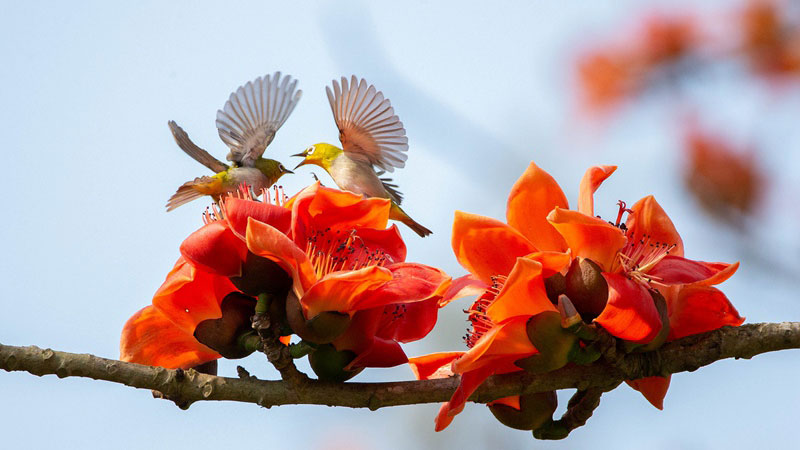Putting people first: the guiding light in China's COVID fight
BEIJING, Jan. 18 (Xinhua) -- With the Chinese Lunar New Year around the corner, the hustle and bustle of crowds has returned to restaurants, hotels and shopping malls across China. People are nabbing tickets to join the Spring Festival travel rush. For many, a family reunion is high on the agenda.
These vibrant scenes follow China optimizing its COVID response measures. After an arduous fight against the pandemic over the past three years, COVID-19 is now managed as a Class B instead of the more serious Class A infectious disease. Many countries have since extended a warm welcome to Chinese visitors to their shores.
A core and consistent vision in China's fight against the virus brought about such a change: an emphasis on putting people and their lives first.
As a Chinese saying goes, "with the skin gone, to what can the hair attach itself?" In the same vein, life is the prerequisite for anything and everything. China prioritizes the right to life as a fundamental human right. Since the onset of COVID-19, the country has constantly adjusted its COVID response policies in light of the evolving situation to protect people's lives and health to the greatest extent possible.
People's lives are paramount. When COVID-19 and its Delta variant began wreaking havoc, most people, particularly the elderly and other vulnerable groups, were ill-equipped to guard against infection. With the people in mind, China carried out an all-out fight, mobilizing human, financial, material and technological resources to stop the spread of the virus in the hardest-hit regions within the shortest time.
From newborns to senior citizens, every life matters. China took rapid prevention and control measures to tackle more than 30 Delta outbreaks and essentially brought the situation under control within 14 days. All these efforts bought China valuable time for developing vaccines and drugs, among other medical resources.
A report by the WHO-China Joint Mission issued in February 2020 hailed China's COVID response as the most "ambitious, agile and aggressive disease containment effort in history" and "deep commitment of the Chinese people to collective action in the face of this common threat." Playing a key mobilizing role, the Chinese government helped the people through the most challenging time of the pandemic by keeping the virus at bay and the death toll at an astonishingly low level.
COVID containment protects life, and development ensures livelihoods. According to scientists, despite its weaker pathogenicity, when the Omicron variant first struck China in early 2022, it was 40 percent more lethal than the flu. During that stage, China turned to swifter and more targeted COVID response measures, which embodied the philosophy of the Yellow Emperor's Inner Canon, an ancient Chinese medical classic: "Instead of curing illnesses, the best doctors prevent them from happening in the first place."
Constant tests and contact tracing helped identify the sources of infection and close contacts. Targeted treatment and quarantine measures controlled the virus and prevented additional harm to people's lives. Timely containment of the spread of the epidemic allowed business operations and people's daily activities to return to normal in the shortest time possible. Policies to ease financial burdens were quickly implemented for enterprises affected by the epidemic. All these endeavors reflect coordination between protecting people's lives and ensuring economic well-being.
Optimization does not mean "lying flat." In the past few weeks, with Omicron much less pathogenic and deadly and China's treatment, testing and vaccination capacity steadily on the rise, China decided to optimize its COVID response policies, which was evidenced by several adjusted and new measures and the latest decision to downgrade the management of COVID-19 to Class B, shifting the focus from stemming infection to managing health and preventing severe cases.
Such changes took time to happen. Three years of fighting variants from Delta to Omicron laid a solid foundation for China to adjust its COVID policies. The variety of drugs and rich therapeutics available significantly reduced the risk of death from COVID-19. Meanwhile, more than 90 percent of the Chinese population had been vaccinated, creating an immunity barrier against the virus.
The optimization of policies is by no means a laissez-faire approach. Countries worldwide underwent a period of adaptation when adjusting their COVID response policies, and China is no exception.
Despite the challenges, tremendous efforts have been made to help people sail through this period. Relevant sectors are working around the clock to beef up medical resources. Diagnosis and treatment facilities are being set up to treat patients in a more targeted way. Free "health packages" containing antipyretics, traditional Chinese medicines, masks and antigen test kits are being delivered to rural residents, senior citizens and those with underlying diseases. A people-centered philosophy permeates every single one of these measures.
Over the past three years, the vision of putting people and their lives first has been the hallmark of China's contribution to the global fight against COVID-19. Having lived through the most demanding period of combat, China is keenly aware of how the virus could take a heavy toll on the people.
With that in mind, China has carried out the most extensive emergency humanitarian operation since the founding of New China. It has provided hundreds of billions of anti-epidemic supplies to 153 countries and 15 international organizations. China was the first to pledge to make its COVID-19 vaccine a global public good and has provided more than 2.2 billion doses of vaccines to more than 120 countries and international organizations. It has also sent 38 medical teams to 34 countries to share its experience without reservation.
All these efforts have helped save lives and bolster health worldwide. They are a testament that China's people-centered philosophy applies well beyond its borders.
"If we had no winter, the spring would not be so pleasant," wrote English poet Anne Bradstreet. Guided by the vision of putting people and their lives first, China has made it through its darkest COVID winter and is forging ahead with confidence. A warmer and brighter spring beckons. Enditem
(Yi Xin is a Beijing-based observer of international affairs.)
Photos
Related Stories
Copyright © 2023 People's Daily Online. All Rights Reserved.









